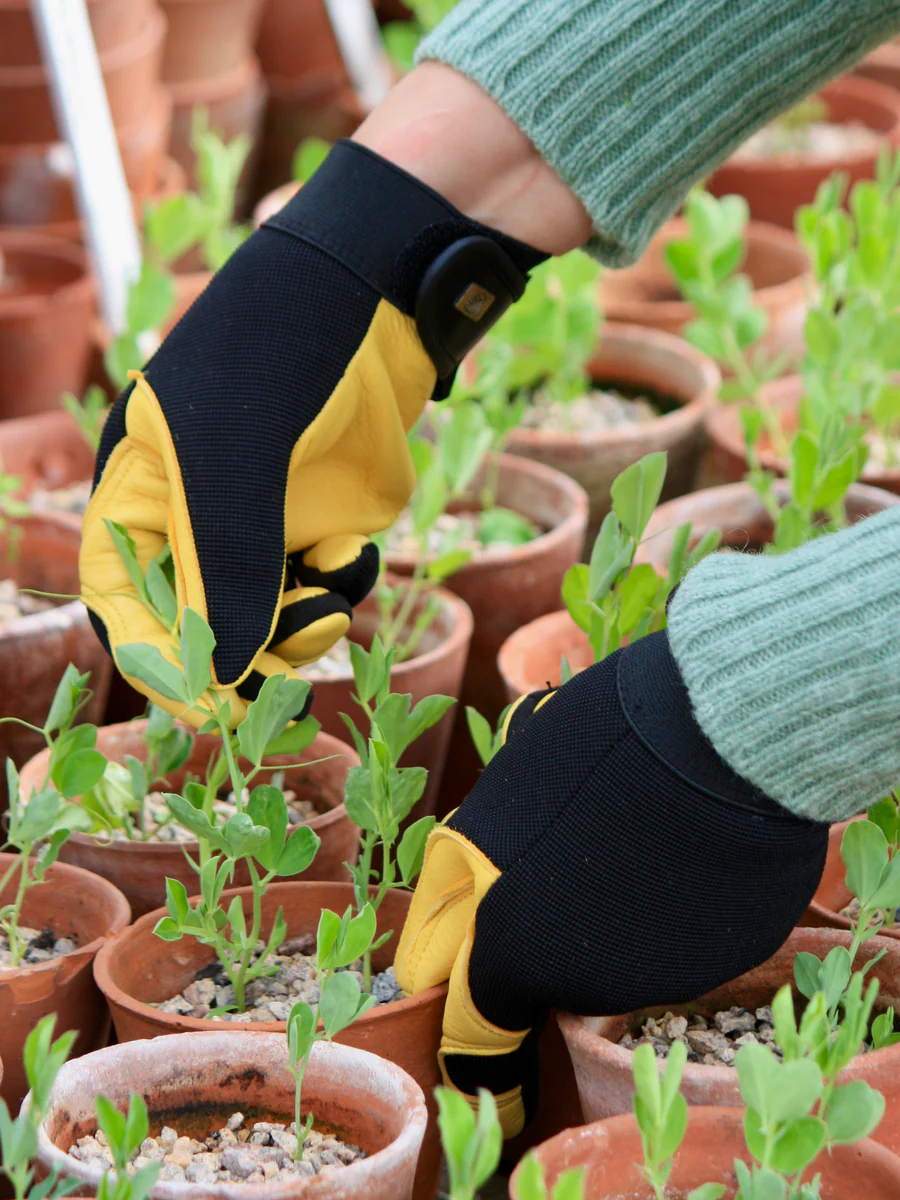 Generally, gardeners tend not to like wearing gloves because they prefer to feel the soil under their fingertips to determine its suitability for planting. However, this can lead to blisters, cuts, scratches, pathogens, allergens, insect bites, UV rays, chemicals, and potentially even infections.
Generally, gardeners tend not to like wearing gloves because they prefer to feel the soil under their fingertips to determine its suitability for planting. However, this can lead to blisters, cuts, scratches, pathogens, allergens, insect bites, UV rays, chemicals, and potentially even infections.
Therefore, we need a pair of gardening gloves to provide some level of protection for our hands, ensuring they remain comfortable and healthy, while also keeping them clean, dry, and presentable. This allows you to switch between work and leisure without interruption. Choosing a good pair of gardening gloves is crucial, and by the end of this article, you will have an unparalleled ability to choose an excellent pair of gardening gloves.
Which Gloves Should I Buy?
First, consider what you need the gloves for. If you just need gloves for everyday tasks like pruning, potting, and weeding, then cotton gloves, rubber gloves, or leather gloves are the most suitable choices.
However, if you need to handle heavy-duty tasks like dealing with thorny bushes and nettles, then you will need goatskin and cowhide gloves, or even heavy-duty gloves with reinforced fingertips and palms to provide the necessary protection. These gloves have excellent puncture, cut, and abrasion resistance.
Garden enthusiasts typically own multiple pairs of gloves, each serving different purposes to complete various tasks.
Choosing the Right Glove Size
When shopping online, it can be tricky to gauge the right size, so it’s essential to understand the size of gloves you need. Most people don’t pay much attention to this, as most gloves on the market are simply labeled small, medium, and large.
The best option is to try them on before buying. At Aibon, we offer free, high-quality samples to encourage you to wear the gloves before deciding. We believe that only by trying our products will you have the most direct experience with them.
Remember: The glove cuffs need to be snug enough to prevent debris from entering the gloves. Gloves that are too tight, too loose, too long, or too short can cause discomfort and unexpected accidents.
Finally, a common concern is the price. Like most things in life, you get what you pay for, so it’s essential to find a balance. If you are a beginner and unsure about frequent gardening, start with a cheap pair of gloves. Once you feel more confident, you can upgrade accordingly.
Gardening gloves are not highly sustainable and are challenging to recycle. Therefore, my best advice is to use them as long as possible before properly disposing of them.
Types of Gardening Gloves
Canvas Gloves
Suitable for lightweight gardening tasks like sowing, planting, watering, and pruning. They are typically worn in dry, hot weather.
Rubber Gloves
Usually a blend of knitted materials made from recycled materials, coated with synthetic rubber called nitrile or natural latex. The only difference is that most people are not allergic to nitrile rubber but might be allergic to latex. Nitrile rubber provides excellent grip and waterproofing. They are generally suitable for general wear and easy to carry. Like cotton/canvas gloves, they are ideal for tasks requiring maximum flexibility, such as potting, watering, and handling soil. The only downside is they cannot protect you from thorns and sharp blades.
Leather Gloves
Generally made from goats, cows, and deer hides. They have natural toughness and durability, with various styles, from hard armor to soft suede non-slip styles. Although leather is not waterproof, a waterproof layer can be added to the middle layer of the gloves.
I Want a Pair of Gardening Gloves,Which Should I Choose?
If you plan to garden in any weather, I recommend Aibon gloves. They are comfortable, waterproof, and in men’s and women’s sizes. Although this distinction might seem outdated, they are indeed very suitable 90% of the time.
If you mainly care for indoor plants, patios, or balconies, then Aibon gardening gloves are your best choice, and they are inexpensive. They come in four sizes: small, medium, large, and extra-large, corresponding to glove sizes 7, 8, 9, and 10. We have yet to serve a customer who couldn’t find a suitable size.
Finally, if you plan to do serious garden cleaning, tree cutting, and other professional gardening work, invest in a pair of gloves to protect your hands, wrists, and forearms from cuts and scratches.
If financially feasible, having both Aibon’s leather gloves and nitrile gloves will cover all possible scenarios.
If you are very interested in our gardening gloves, please contact us as soon as possible. We are at your service 24 hours a day.
How to Measure Glove Sizes – Source: AIBON
Latex gloves– Source: AIBON
Safety gloves– Source: AIBON
Working gloves– Source: AIBON

